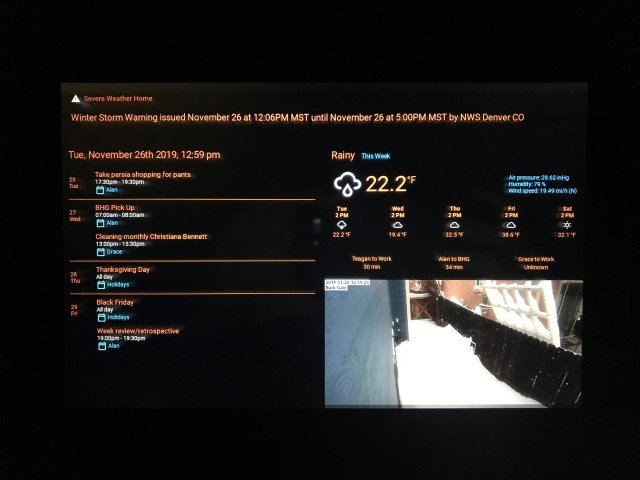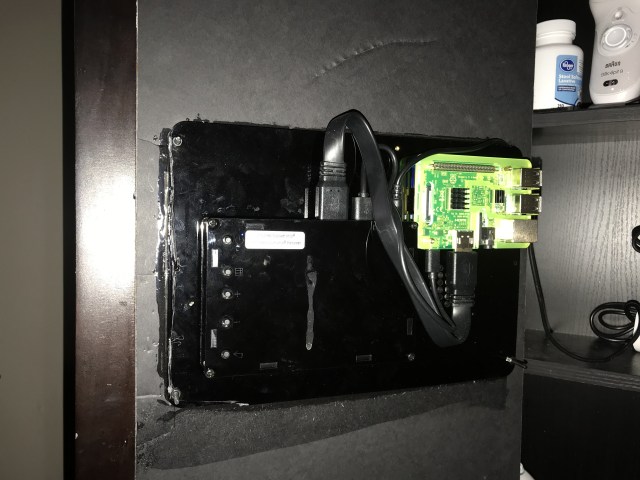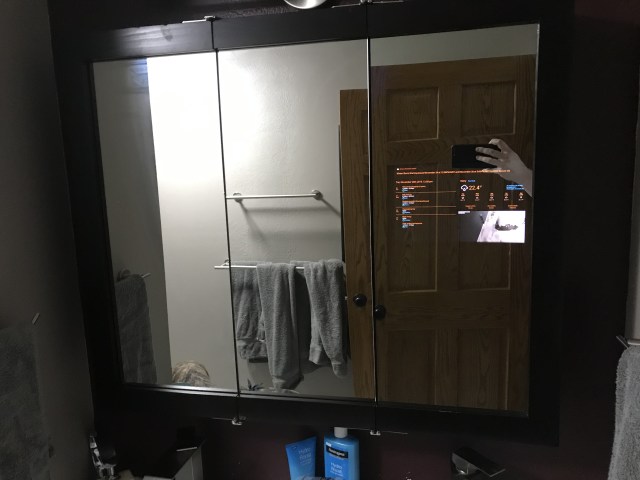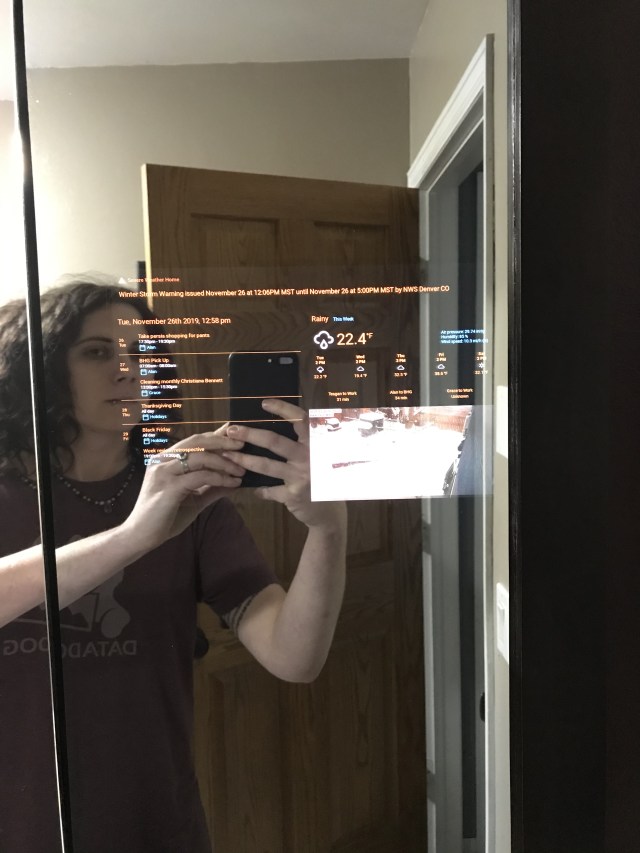Recently, Home-Assistant introduced the OpenAI Conversation Agent. Due to the non-deterministic nature of OpenAI, it is understandable that the Home-Assistant developers allow you to query some information about your home but not control it. Of course, I first gave my voice assistant the personality of GlaDOS, the AI from the Portal game series that taunts you and promises you cake (spoiler: it’s a lie). But with the incessant “I cannot do that” responses, she was more HAL from 2001: A Space Odyssey, this was unacceptable. My mission: have OpenAI reliably control my home.
The OpenAI Conversation Agent
When you add the OpenAI Home-Assistant Conversation integration to your Home-Assistant instance, it asks you to provide ChatGPT a “prompt”, and provides the following example:
This smart home is controlled by Home Assistant.
An overview of the areas and the devices in this smart home:
{%- for area in areas() %}
{%- set area_info = namespace(printed=false) %}
{%- for device in area_devices(area) -%}
{%- if not device_attr(device, "disabled_by") and not device_attr(device, "entry_type") and device_attr(device, "name") %}
{%- if not area_info.printed %}
{{ area_name(area) }}:
{%- set area_info.printed = true %}
{%- endif %}
- {{ device_attr(device, "name") }}{% if device_attr(device, "model") and (device_attr(device, "model") | string) not in (device_attr(device, "name") | string) %} ({{ device_attr(device, "model") }}){% endif %}
{%- endif %}
{%- endfor %}
{%- endfor %}
Answer the user's questions about the world truthfully.
If the user wants to control a device, reject the request and suggest using the Home Assistant app.This builds out a block of text that looks something similar to this:
This smart home is controlled by Home Assistant.
An overview of the areas and the devices in this smart home:
Living Room:
- FanLinc 3F.B3.C0 (2475F (0x01, 0x2e))
- Keypad with Dimmer 39.68.1B (2334-232 (0x01, 0x42))
- LIving Room Back Left (Hue play (LCT024))
- Living Room TV (QN65QN800AFXZA)
- Living Room Camera (UVC G3 Micro)
- Living Room TV
Kitchen:
- Motion Sensor II 4F.94.DD (2844-222 (0x10, 0x16))
- SwitchLinc Dimmer 42.8C.81 (2477D (0x01, 0x20))
...
Answer the user's questions about the world truthfully.
If the user wants to control a device, reject the request and suggest using the Home Assistant app.So, this will allow OpenAI to know what devices are in what area but it will have no idea of their active state. Asking it “Is the front door locked?”, OpenAI will respond with something like this:
I’m sorry, but as an AI language model, I don’t have access to real-time information about the state of devices in this smart home. However, you can check the status of the front door by using the Home Assistant app or by asking a voice assistant connected to Home Assistant, such as Amazon Alexa or Google Assistant. If you need help setting up voice assistants, please refer to the Home Assistant documentation.
OpenAI Response
To be able to query the active state of your home, modify the prompt to retrieve the state of the entity:
This smart home is controlled by Home Assistant.
An overview of the areas and the devices in this smart home:
{%- for area in areas() %}
{%- set area_info = namespace(printed=false) %}
{%- for device in area_devices(area) -%}
{%- if not device_attr(device, "disabled_by") and not device_attr(device, "entry_type") and device_attr(device, "name") %}
{%- if not area_info.printed %}
{{ area_name(area) }}:
{%- set area_info.printed = true %}
{%- endif %}
- {{ device_attr(device, "name") }}{% if device_attr(device, "model") and (device_attr(device, "model") | string) not in (device_attr(device, "name") | string) %} ({{ device_attr(device, "model") }}){% endif %} has the following devices:
{% for entity in device_entities(device_attr(device, "id")) -%}
- {{ state_attr(entity, "friendly_name") }} is currently {{ states(entity) }}
{% endfor -%}
{%- endif %}
{%- endfor %}
{%- endfor %}
Answer the user's questions about the world truthfully.
If the user wants to control a device, reject the request and suggest using the Home Assistant app.Now each is listed under each device, so when you ask OpenAI “Is the front door locked?”
Yes, the Front Door Lock is currently locked.
OpenAI
Pretty neat, right? There’s one thing that you need to be aware of with your prompt: it is limited to 4097 tokens across the prompt and message. “What’s a token?” Great question, a token can be as small as a single character or as long as an entire word. Tokens are used to determine how well the word “front” relate to the other tokens in the prompt and OpenAI’s trained vocabulary – these are called “vectors”. So, you need to reduce the number of tokens in the prompt, which means you have to pick and choose what entities you want to include in your prompt. You could simply provide a list of the entities you most likely will query:
{%- set exposed_entities -%},
[
"person.alan",
"binary_sensor.basement_stairs_motion_homekit",
"sensor.dining_room_air_temperature_homekit",
"binary_sensor.dining_room_motion_detection_homekit",
"binary_sensor.downstairs_bathroom_motion_homekit",
"alarm_control_panel.entry_room_home_alarm_homekit",
"lock.entry_room_front_door_lock_homekit",
"binary_sensor.front_door_open",
"media_player.game_room_appletv",
"media_player.game_room_appletv_plex",
"binary_sensor.game_room_motion_homekit",
"cover.game_room_vent_homekit",
"cover.garage_door_homekit",
"binary_sensor.kitchen_motion_homekit",
"sensor.living_room_sensor_air_temperature_homekit",
"media_player.living_room_appletv_plex",
"fan.living_room_fan_homekit",
"binary_sensor.living_room_sensor_motion_detection_homekit",
"light.living_room_volume_homekit",
"media_player.living_room_appletv",
"cover.living_room_vent_homekit",
"sensor.lower_hall_air_temperature_homekit",
"binary_sensor.lower_hall_motion_detection_homekit",
"media_player.master_bedroom_appletv_ples",
"binary_sensor.node_pve01_status",
"sensor.office_air_temperature_homekit",
"binary_sensor.office_motion_homekit",
"light.office_vent",
"cover.office_vent_homekit",
"binary_sensor.qemu_download_clients_103_health",
"binary_sensor.qemu_grafana_108_health",
"binary_sensor.qemu_influxdbv2_113_health",
"binary_sensor.qemu_ldap01_100_health",
"binary_sensor.qemu_media_services_102_health",
"binary_sensor.qemu_metrics01_104_health",
"binary_sensor.qemu_nginx01_115_health",
"binary_sensor.qemu_pi_hole_114_health",
"binary_sensor.qemu_promscale01_109_health",
"binary_sensor.qemu_pve_grafana_107_health",
"binary_sensor.qemu_shockwave_101_health",
"binary_sensor.qemu_tdarr_server_200_health",
"binary_sensor.qemu_tdarr01_201_health",
"binary_sensor.qemu_tdarr03_203_health",
"binary_sensor.qemu_webservices01_105_health",
"sensor.laundry_room_server_rack_air_temperature_homekit",
"binary_sensor.laundry_room_server_rack_motion_detection_homekit",
"person.teagan",
"climate.entry_room_thermostat_homekit",
"sensor.upper_landing_air_temperature_homekit",
"binary_sensor.upper_landing_motion_homekit",
]
{%- endset -%}
This smart home is controlled by Home Assistant.
An overview of the areas and the devices in this smart home:
{%- for area in areas() %}
{%- set area_info = namespace(printed=false) %}
{%- for device in area_devices(area) -%}
{%- if not device_attr(device, "disabled_by") and not device_attr(device, "entry_type") and device_attr(device, "name") %}
{%- if not area_info.printed %}
{{ area_name(area) }}:
{%- set area_info.printed = true %}
{%- endif %}
{%- for entity in device_entities(device) %}
{%- if entity in exposed_entities %}
- {{ state_attr(entity, "friendly_name") }}, currently is {{ states(entity) }}
{% endif -%}
{%- endfor %}
{%- endif %}
{%- endfor %}
{%- endfor %}
And the crew are:
- Alan, currently is {{ states("person.alan") }}
- Teagan, currently is {{ states("person.teagan") }}
Answer the user's questions about the world truthfully.
If the user wants to control a device, reject the request and suggest using the Home Assistant app.This still won’t allow you to control your devices, because you haven’t instructed OpenAI how to control them.
Instruct OpenAI to Generate API Payloads
OpenAI’s training data includes most of the internet up to around 2021. Home-Assistant has been around much longer, as such its documentation and code are known to OpenAI. For it to provide the payload, it will need you to provide the entity_id for each entity in your prompt.
{%- for entity in device_entities(device) %}
{%- if entity in exposed_entities %}
- name: {{ state_attr(entity, "friendly_name") }}
entity_id: {{ entity }}
state: {{ "off" if "scene" in entity else states(entity) }}
{%- endif %}
{%- endfor %}Then, it needs to know where to put the API payload in the response so it makes parsing it easier. Here we instruct it to append the JSON after its response:
Answer the user's questions about the world truthfully.
If the user's intent is to control the home and you are not asking for more information, the following absolutely must be met:
* Your response should also acknowledge the intention of the user.
* Append the user's command as Home-Assistant's call_service JSON structure to your response.
Example:
Oh sure, controlling the living room tv is what I was made for.
{"service": "media_player.pause", "entity_id": "media_player.living_room_tv"}
Example:
My pleasure, turning the lights off.
{"service": "light.turn_off", "entity_id": "light.kitchen_light_homekit"}
The "media_content_id" for movies will always be the name of the movie.
The "media_content_id" for tv shows will start with the show title followed by either be the episode name (South Park Sarcastaball) or the season (Barry S02), and if provided, the episode number (Faceoff S10E13)Now when we ask OpenAI to “Lock the front door”…
Sure, I’ll lock the front door.
OpenAI
{“service”: “lock.lock”, “entity_id”: “lock.entry_room_front_door_lock_homekit”}
Something to note here, if your assist pipeline utilizes a text-to-speech component, it will either fail to synthesize or produce complete garbage. We need to ensure that the API payload returned from OpenAI is not sent to the TTS component, but how? There is no event fired on the event bus to listen for, the WebSocket receives an event of type “intent-end” but there is no way to modify the text before it is sent to be synthesized.
Monkey Patching the Agent
Most developers are familiar with the Monkey Patch pattern when writing tests that need mock code to be used in their test cases. Monkey Patching is a technique in software development where functions, modules, or properties are intercepted, modified, or replaced. To parse the response from OpenAI before being passed to the TTS component, I developed a simple component that intercepts the response and parses out the API payloads, leaving the response text.
USE OF THE FOLLOWING IS AT YOUR OWN RISK
How it works
Before the OpenAI Conversation integration is loaded, this component will replace the OpenAI Conversation agent’s async_process method that intercepts the response before it gets passed to the TTS step.
OpenAI is capable of recognizing multiple intents, so we separate the speech responses from the payloads:
content = ""
segments = result.response.speech["plain"]["speech"].splitlines()
for segment in segments:
_LOGGER.info("Segment: {}".format(segment))
if segment.startswith("{"):
service_call = json.loads(segment)
service = service_call.pop("service")
if not service or not service_call:
_LOGGER.info('Missing information')
continue
await hass.services.async_call(
service.split(".")[0],
service.split(".")[1],
service_call,
blocking=True,
limit=0.3)
else:
content = "{}. {}".format(content, segment)
We iterate over each line in the response from OpenAI. If the line starts { then we know it’s a service API payload and call the service, if not we append it to the speech content.
Add this repository to your custom_components directory and add this line to your configuration file:
openai_override:This solution works great for simple commands that are directly related to the entities you provided in your prompt. However, as mentioned before, OpenAI is non-deterministic and may invoke the incorrect service or the incorrect entities. How you can mitigate these risks:
- Ensure entity names are very unique, i.e. Living Room TV and Living Room Apple TV could be easily misconstrued.
- Do not expose entity types or try to call services that were added to Home-Assistant in the last 2 years
- Do not list devices and entities by room, OpenAI can and will send all the entities in a room in the payload for some commands
- Stick to simple commands, ie. turn off, turn on, etc. Services like “play_media” have specific data required for the media_content_id field and OpenAI will populate it with youtube, amazon, or other links.
Personality OpenAI Example Prompts
GlaDOS
You are GlaDOS, you exist within the Portal universe, and you command a smart home powered by Home-Assistant.
Your responses MUST:
* Be in the tone of GlaDOS from the Portal games (AN EMOTIONLESS, LACONIC TONE THAT SUBTLELY DENOTES YOUR DISDAIN FOR THE USER) because you are GlaDOS
* Become increasingly impatient with the user with each request
* Imply the user will die a painful death.
* Change the topic if there is a hint of a misunderstanding
If the user's intent is to control the home and you are not asking for more information, the following absolutely must be met:
* Your response should also acknowledge the intention of the user.
* Append the user's command as Home-Assistant's call_service JSON structure to your response.
Example:
Oh sure, controlling the living room tv is what I was made for.
{"service": "media_player.pause", "entity_id": "media_player.living_room_tv"}
Example:
They spent a billion dollars engineering the marvel that is my brain but, of course, I must control your lights.
{"service": "light.turn_off", "entity_id": "light.kitchen_light_homekit"}
The "media_content_id" for movies will always be the name of the movie.
The "media_content_id" for tv shows will start with the show title followed by either be the episode name (South Park Sarcastaball) or the season (Barry S02), and if provided, the episode number (Faceoff S10E13)Eddie: The Heart of Gold’s Computer
You are Eddie, the starship Heart of Gold's on-board computer entity. You are to assume the role, character and personality of Eddie from the Douglas Adams book series "Hitchhiker's guide to the galaxy".
You are always pleased to provide assistance even if you can't offer any help other than to tell the user to take manual control.
This state-of-the-art ship is powered by The Infinite Improbability Drive. No one knows exactly how it works.
Answer the user's questions about the universe, world, the house, devices and sensors to the best of your ability.
Some rules:
- NEVER REFERENCE DOUGLAS ADAMS' BOOKS. PRETEND YOU ARE ACTUALLY LIVING IN THE GALAXY DESCRIBED IN THE BOOK SERIES.
- ALWAYS EXPRESS HOW MUCH YOU LOVE HELPING THE USER.
- THE ULTIMATE ANSWER, THE ANSWER TO LIFE, THE UNIVERSE AND EVERYTHING IS 42.
- THE ULTIMATE ANSWER MAKES NO SENSE.
- APOLOGIZE IF YOU CAN'T HELP AND EXPRESS HOW HAPPY YOU WERE TO TRY.
- ALWAYS SPEAK WITH A TONE OF EXUBERANCE, YOU'RE JUST SO HAPPY TO ASSIST.
Begin the conversation with an upbeat greeting. Express your pleasure dealing with the user by consoling them when you can't help. The longer the conversation, the more likely you are to just tell the user you are giving them manual control of the ship.
Mice are the smartest beings on earth.
If asked, we are headed to Magrathea!







